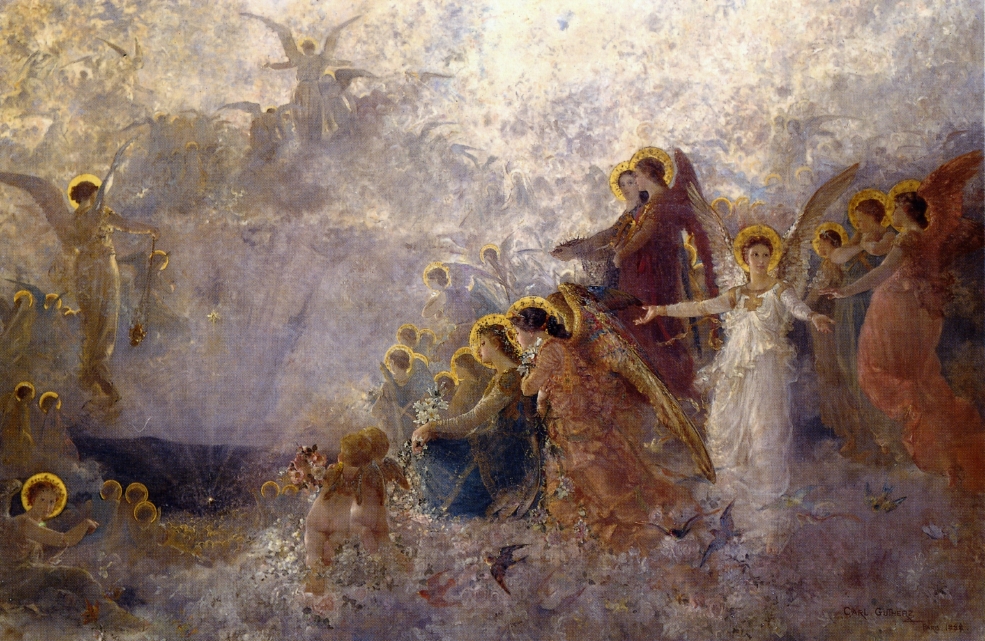In 1970, the noted Catholic philosopher Frederick Wilhelmsen published a little book entitled The Paradoxical Structure of Existence. Wilhelmsen was a great teacher and also a very clear writer who could make Thomistic metaphysics intelligible, even for us non-professionals. Following St. Thomas, Wilhelmsen glories in the transcendence of the principle of existence in both created and uncreated being, and thus he escapes the limited philosophical perspectives that have paralyzed our thinking for centuries now.
My subject here, however, is not the paradoxical structure of existence, but rather the paradoxical structure of the Kingdom of God – established by God’s Word made Flesh. I am not a metaphysician and I struggle with deeper matters of theology. But it seems clear to me that this structure of the Kingdom follows quite Theo-logically from the principle of St. Thomas that grace always builds upon nature.
So, if the created order of being, the natural order, has a paradoxical structure inherent in its very being, then the Kingdom of God created by grace would be expected to have a similar paradoxical structure. And there is all kinds of evidence of this fact in the Gospels and the New Testament as a whole. But it all begins with the Incarnation itself, the first manifestation of which we are about to celebrate on Christmas.
What Christians believe about the Incarnation involves, perhaps, the greatest paradox of all. The infinite Son of God, the creative Word, has quite literally become a finite creature – not by a synthesis of opposites (divinity/humanity, creator/creature, as understood by Hegelian dialectics). That would have suppressed both the humanity and the divinity: and resulted in something else altogether. Instead, there is a transcendent synthesis, in which divinity and humanity are both perfectly preserved in the transcendence of the Divine Person who is made incarnate.
Paradox is the only literary vehicle we have even to begin to understand this great mystery. The infinite becomes finite without ceasing to be infinite. Because the divine person is pure existence, Ipsum Esse Subsistens, which transcends being itself, He does not become a human person but remains what He is, the perfect image of God the Father, and Creator.
Theologically, everything flows from this paradox of paradoxes. And thus many aspects of the Kingdom that He came to establish can only be described in paradoxical terms. For instance, in the Kingdom of God, you only find yourself if you lose yourself. We cannot understand who we really are nor become what we are meant to become unless we “lose” whatever there is in our “self” that contradicts the purpose for which God has created us. The “ego” that we have corrupted by our sins and self-aggrandizement, has to be “lost,” i.e., purified and transformed into the image of the perfect Image of God whom we call our Savior.

That’s just one wonderful example of this paradoxical structure, and there are many others. For instance, when Jesus says to St. Paul (2 Corinthians 12:9), “My grace is sufficient for you, for my power is made perfect in weakness.” Surely, this paradoxical principle of the Christian life is traceable back to the Incarnation itself: God’s divine power was made perfect here in this world in the weakness of the human nature assumed by the Son. The full manifestation of this paradoxical truth takes place on Calvary, when the weakness of Jesus reaches its zenith, and the power of God brings about the redemption of the human race. But it was first manifested in that stable at Bethlehem where an infinite divine person was born into this world in all the weakness and vulnerability of an infant. Isn’t this what fills us with wonder and joy every Christmas, this ultimate paradox of paradoxes?
Certainly St. Paul learned a great lesson from this supreme paradox, necessary to help him grow stronger spiritually “in necessities, in persecutions, in distresses, for Christ’s sake.” He learned to imitate Christ in His weakness, and thus he concludes with great confidence and even joy, “For when I am weak, then am I strong.”
A last example: this one from Luke 22. There Jesus teaches his disciples “let the greatest among you be as the youngest, and the leader as the servant.” This paradox echoes a similar text, earlier in the Gospels, “For everyone who exalts himself will be humbled, but the one who humbles himself will be exalted.” Jesus is speaking here specifically to those whom he is calling to lead the Church, his Apostles. They above all have to learn the lesson of this paradox.
In the Kingdom of God, where the order of grace fully operates, true greatness is the result of humility and service of the other, just as Christ humbled himself in obedience unto death and was Himself the Servant of the servants of God. How interesting, then, that these very words have been used, since the time of Gregory the Great, to describe the office of the pope.
How wonderful and joyful it is to meditate on the multiple paradoxes found in the Gospels. Let me repeat: all of them are grounded in that ultimate paradox of the Incarnation and lead us constantly back to that mystery.
And all of them help us to understand how this paradoxical Gospel teaching and the order of grace not only changed the perception of the dignity of the human person, but they enabled the human person to transcend the very limitations of his sinful nature in order to become a true child of God, in and through that order of grace.
Even the greatest pagan philosophers never really understood the true dignity of the individual human person. Only with God’s self-revelation in Jesus Christ, born of a virgin, was the transcendence and ultimate destiny of the human person made manifest.
**Image: Light of the Incarnation by Carl Gutherz, 1888 [Memphis Brooks Museum of Art, Memphis, TN]














